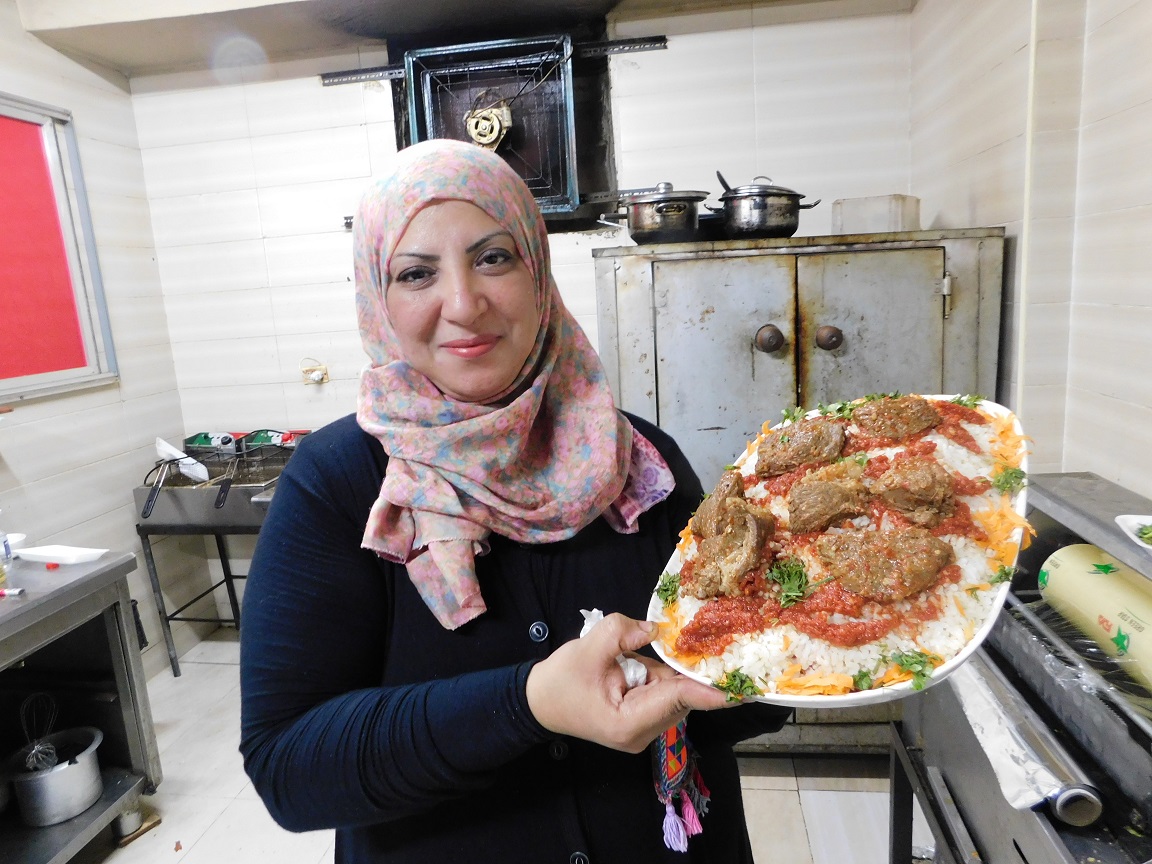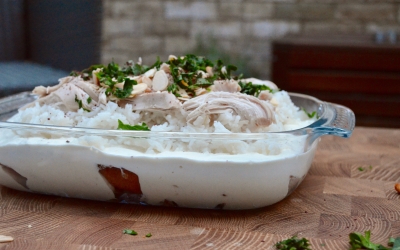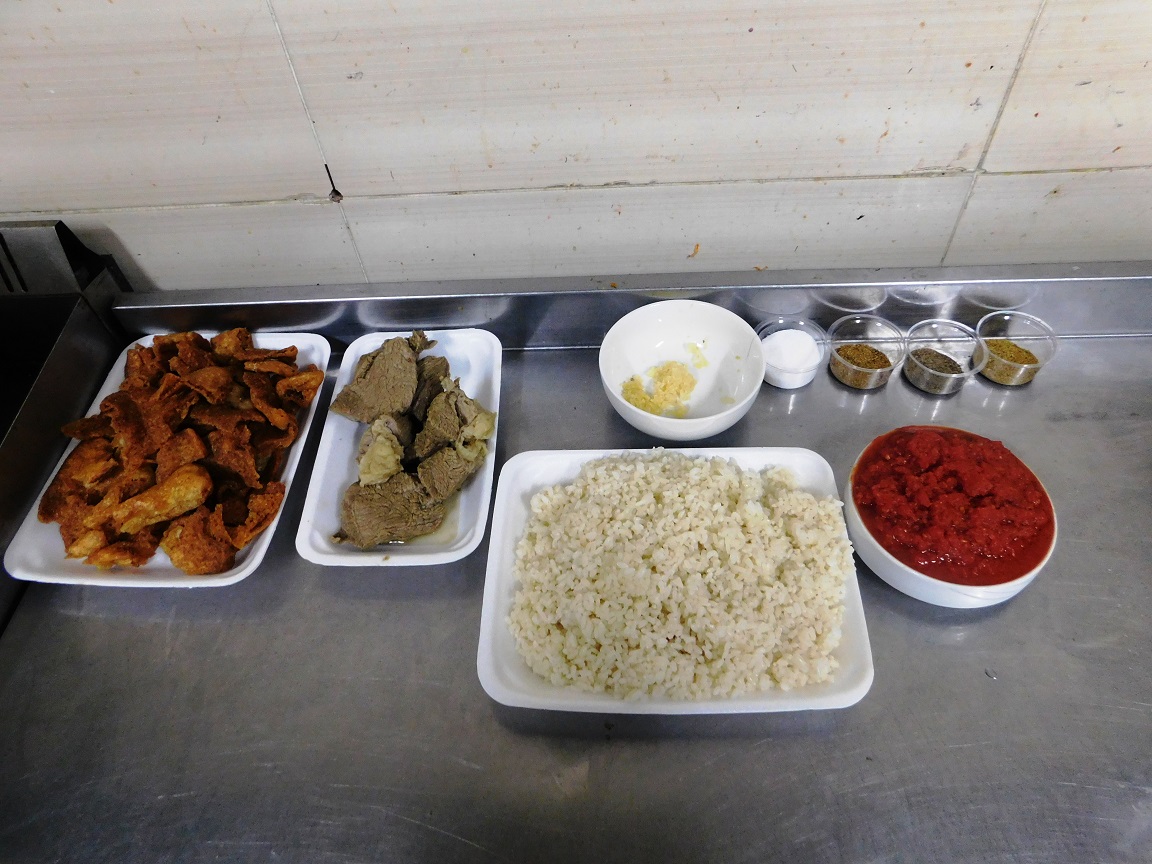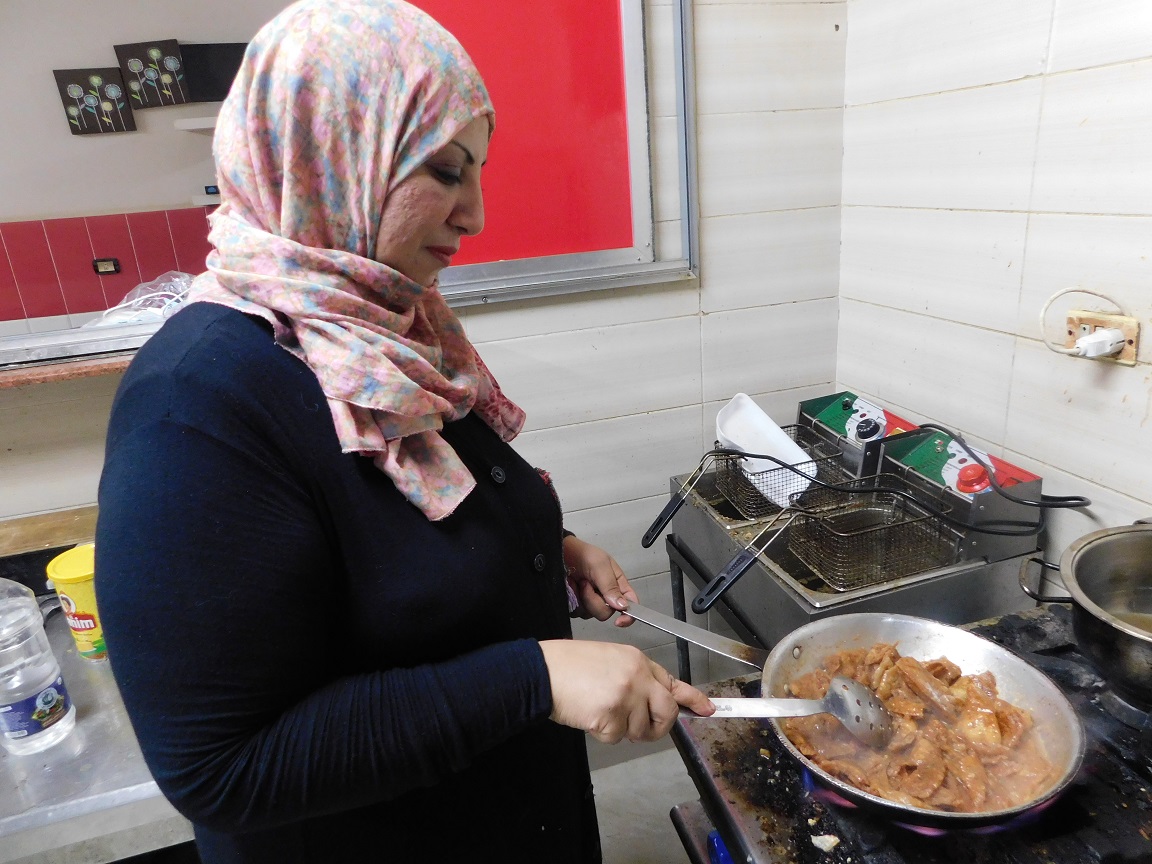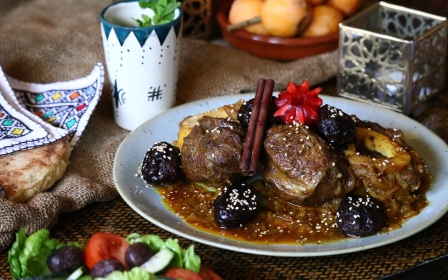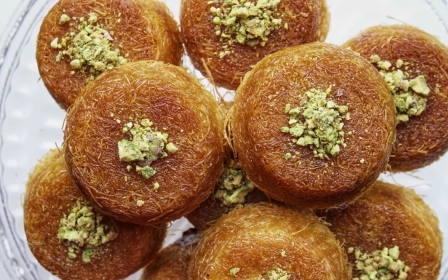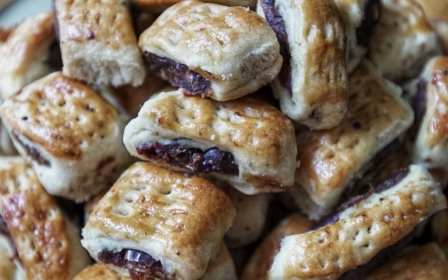'Eid has no joy without it': How to make Egyptian fattah

It's about lunchtime when Rasha Mohamed, the chef and owner of Al-Tajin, stands inside the kitchen of her small restaurant instructing her cooks to keep up with the orders coming in.
Located on the outskirts of Giza province, the restaurant serves authentic local dishes, and one meal in particular has a spike of orders around this time of the year - Egyptian fattah.
Fattah is usually eaten on the first day of the Islamic celebration of Eid al-Adha but will be found on dinner tables all year round.
Four years running, hardly a day passes without fattah orders at Al-Tajin. "It is a delicious dish that we like to eat any time, but it has a special status during Eid al-Adha," Mohamed says.
New MEE newsletter: Jerusalem Dispatch
Sign up to get the latest insights and analysis on Israel-Palestine, alongside Turkey Unpacked and other MEE newsletters
Some Egyptians, especially the older generation, eat that heavy dish for breakfast after they return from Eid prayers, while most eat it for lunch.
"Cooking fattah is like a going on a trip that you long for. It's a passion, requiring a clear mind and spirit or else it won't taste as good as expected," she adds.
Same ingredients, different tastes
Even though the dish sometimes differs from one cook to another, the main ingredients stay the same: fried crispy traditional bread, white rice, garlic, vinegar and meat all cooked with natural ghee.
Other types of fattah are known in the Levantine area where they make their own variations. In Syria, it is made with yoghurt and tahini sauce and sometimes with chicken rather than meat.
There is a difference between home-made fattah and the one served at restaurants. "The eye eats before the mouth. Fattah served at restaurants is garnished and presented in a special way, which appeals to customers," she says.
Egyptian women recall special memories of fattah cooked by their grandmothers. "I basically learned how to cook fattah from my late grandmother. She used to make me smell the sourness of garlic dipped in vinegar, which I can't forget till today," Nahed Galal, a housewife, says.
"My husband and my children always ask me to cook fattah, especially during the holy month of Ramadan as an iftar [fast-breaking] meal. Yet it has a special taste during Eid for us as Egyptians. Eid has no joy without fattah, which both children and adults like," she adds.
The sour taste of garlic dipped in vinegar and its pungent smell are unique to the dish.
Egyptians like to eat it in winter specifically because it is warm, filling and comforting. "At my restaurant, we receive orders of fattah literally every day in winter," Mohamed says.
Serving methods differ from one Egyptian city to another. In the Mediterranean city of Alexandria for example, it is served without tomato sauce. But in Cairo and other cities, tomato sauce is added on top of the dish.
High prices
Egypt's economic struggles have led to a significant increase in the prices of everyday groceries and local meat.
A meal of homemade fattah enough for four adults would cost around 250 Egyptian pounds (about $15), which is relatively expensive for a middle-class family.
"Egyptians deal with that problem by buying cheaper types of meat, like imported beef from Brazil and Sudan, but they never taste like locally bred beef," Mohamed says.
Pharaonic roots?
According to a Islamic studies researcher based in Cairo, Mohamed Islam, the name fattah is derived from the Arabic noun fotat (crumbs) in reference to the pieces of crunchy bread added to the dish.
The origin of the fattah dish is unclear. "Some believe it dates back to the Pharaonic times. The dish grew in popularity during the Fatimid era [10th to 12th centuries CE]. At that time, it was called the 'people's meal' because the rich and the poor ate it alike and it was favoured by everyone," Islam says.
"The Fatimid caliphs would supervise, in huge celebrations, the slaughter of sheep and cows after Eid prayers and oversee the distribution of fattah dishes with meat to their people."
Recipe
Serves: 3
Preparation and cooking time: 2 hours
1. Ingredients
- 1kg of white rice
- 3 loaves of flatbread
- 50ml of vinegar
- Salt and pepper as desired
- 10 tbsps of natural ghee (you can use any cooking butter or oil as an alternative)
- 100g of minced garlic
- 2 onions
- 1kg of meat cubes (type as desired)
- ½kg of fresh tomatoes
- Pinch of dried coriander powder (optional)
- Pinch of nutmeg powder (optional)
- Pinch of cardamom powder (optional)
2. Method
Cooking the rice:
- Wash rice well with running water and then drain it.
- Heat four tablespoons of ghee in a pot.
- Add salt (as desired).
- Add the rice and about 1 litre of boiled water and leave on medium heat.
- Once the water has been absorbed by the rice, cover the pot and turn the heat down to low.
- Leave the rice to cook for about 20 to 30 minutes.
Cooking the meat:
- Set aside 1kg of meat cubes.
- Dice two average-sized onions and put them in a pot.
- Heat the meat cubes with chopped onions.
- Add salt and pepper as desired.
- Cover the meat with boiled water.
- Put the pot on average heat and leave to cook for an hour (the time of cooking depends on the size and type of meat).
- After the meat has cooked, separate the broth from the meat and set aside. (Do not throw away the broth).
- Heat two tablespoons of ghee in a pan and mix the meat with the ghee until the meat changes colour.
- Aim to keep the meat soft by not letting it fry but rather stir until it soaks in the ghee.
Preparing the sauce:
- Blend ½kg of tomatoes in a blender and pour into a pot.
- Then heat until the water in the tomato sauce vaporises.
- In a separate small pan, put two tablespoons of ghee and wait until it melts.
- Add the garlic and let it cook until it becomes golden in colour.
- Next add the vinegar, tomato sauce, salt, pepper, nutmeg, cardamom, coriander and mix well.
- Once heated and mixed well, set aside.
The crispy bread:
- Heat two tablespoons of ghee in a medium-large pan and add the bread cut into small squares.
- Mix well over average heat and leave the pieces of bread till they become crispy and golden.
- Once ready, switch off the heat and add half of the meat broth to the bread.
- Let the bread soak in the broth, then add half of the tomato sauce onto the bread and set aside.
Preparing the dish:
- Place the bread on a large serving plate.
- Add a layer of the cooked rice.
- Add the remaining tomato sauce on top of the rice.
- Place the meat on top and enjoy.
This article is available in French on Middle East Eye French edition.
Middle East Eye delivers independent and unrivalled coverage and analysis of the Middle East, North Africa and beyond. To learn more about republishing this content and the associated fees, please fill out this form. More about MEE can be found here.


